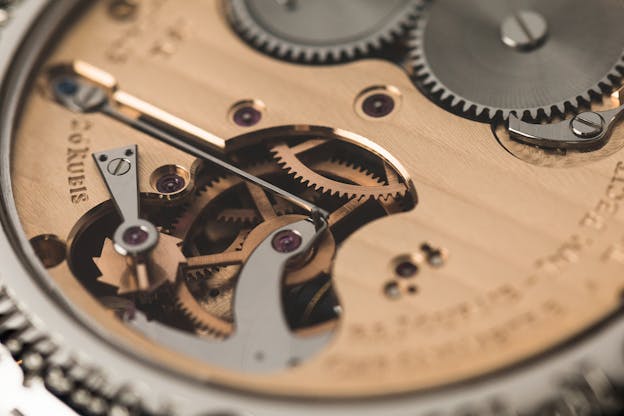Taking Sides: The Tourbillon is Not a Complication
Why one of today’s most popular complications is anything but.
In this first installment of Taking Sides, Jack Forster and Griffin Bartsch debate the classification of the tourbillon and whether it should be considered a complication. Today, Griffin argues that the tourbillon is not a complication. You can read Jack’s counterargument here.
Is the tourbillon a complication? No. No, it’s not. You know how I know it’s not? Because it’s not.
Has the tourbillon become a hallmark of complicated high-end watchmaking? Sure. But that still doesn’t make it a complication.

Okay, before we get into this any further, it is worth noting that even within the realm of endlessly pedantic debates watch enthusiasts so often find themselves engaged in, whether or not a tourbillon is a complication has nearly no practical relevance. Even at its most impactful, I’m not really sure this would accomplish much more than changing some filter rules on a couple of websites, yet here we are.
What is a Complication?
I think we can all agree that the purpose of a watch is to tell the time. A watch does this by displaying hours, minutes and seconds (for the most part — watches which choose to omit a visible display of seconds are fairly common). So, if telling the time is the base function of a watch, what comes now is to define what a complication even is and for that, I turn to the printed words of my illustrious sparring partner, Jack Forster, in “Watches A Guide by HODINKEE.” As he puts it, “In simple terms, a complication is anything extra in a watch — anything more than the time.”
Put otherwise; a complication is an added function in a watch. This could be something as simple as the addition of a date or as technically complex as a perpetual calendar. The key is that it allows the watch to do something — anything — beyond simply telling the time. This is why, for as noble and impressive as the tourbillon is and can be, it is not a complication.

I wish more makers of tourbillons would take a leaf out of A. Lange & Söhne’s book. Here we have a wonderfully complicated watch, the Datograph Perpetual, elevated by the addition of a hidden tourbillon.
If Not a Complication, Then What?
Tourbillons are, for those perhaps less well-versed in the minutiae of movement design, a mechanism used to counteract the effect of gravity, particularly on pocket watches, for which they were invented (If you’d like to learn more, check out Jack’s multi-part story on the history of the tourbillon). The idea goes that by mounting the escapement and balance wheel of a watch in a rotating cage, the small but significant impact gravity can have on the minuscule parts of a watch’s timekeeping system are negated. This was critical with pocket watches, which exist in a single orientation for most of the day. With this in mind, it is clear that the tourbillon is, for lack of a better classification, a regulating device — a technical refinement of the basic operation of a watch, rather than an additive feature.
We have, as a general rule, accepted that regulating devices are not complications. I have never once, for example, heard someone describe the fusée-and-chain or remontoire as anything more than regulating devices — despite the fact that they fill a role very much in line with that of the tourbillon.

One argument in favor of a dissident classification comes from the assertion that the tourbillon has evolved beyond this task. Double, triple and even quadruple tourbillons are now on the market, and there is no question in my mind that these are incredible feats of high-end fine watchmaking. But, while these leaps forward have refined the abilities of a tourbillon, they have not changed the intent or offered any new feature — the tourbillon remains a mechanism for increasing the accuracy of a watch, even if only fractionally. Making something better, and even more capable, does not change what that thing is at its root.
To offer a point of comparison, Volkswagen Group’s Bugatti Chiron Supersport 300+, the world’s fastest production car, is still no more or less a car than a Golf GTI. Sure, the Bugatti Chiron has a few more parts and requires a complete team of engineers to actually get it to its top speed but, at the end of the day, they both still have four wheels, a gearbox and a petrol engine. They are still each a car. One just happens to be able to do 304.7 Mph (490 Kph).

Images, Volkswagen
Why the Debate?
I think it’s interesting that we continue to debate the categorization of the tourbillon. Seeing as it’s not something that comes up when talking about other similar, but less common, technical devices; I have to imagine that this comes down to ubiquity. You don’t have to fall far down the rabbit hole to start seeing tourbillons pop up left and right — just about every brand that makes a claim to luxury watchmaking produces one these days. And it’s certainly easier to just lump them in with complications than actually explain yet another new concept to a broad audience. But, seeing as this is a hobby of precise and exacting definitions, this is where I choose to draw the line: The tourbillon is absolutely not a complication.

